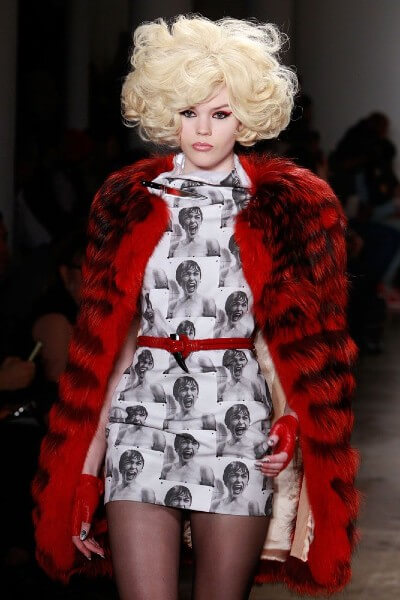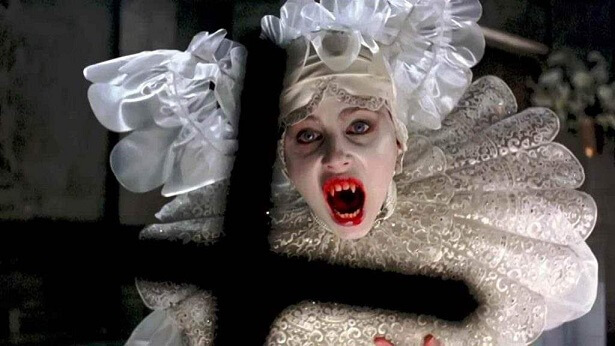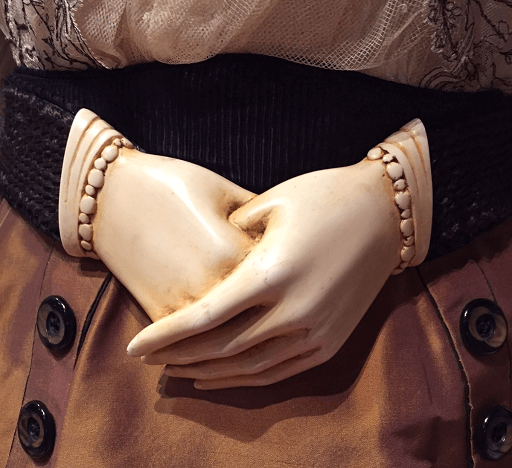Dressed To Kill: Enhancing Horror Through Fashion
For me, there has always been a love affair between horror films and the fashion industry. They both temper the balance between risk, danger, and seduction. They make us feel uneasy, excited, or curious, and they’re always striving for an unexpected twist. Since the Halloween season is upon us I thought I would share some of my favourite horror films that have elevated their climate by weaving fashion into the narrative.
Hitchcock
The majority of Hitchcock’s films used fashion to highlight their female protagonists. So much so that it coined the term “Hitchcock Blonde.” It girls Grace Kelly, Tippi Hedren, and Janet Leigh graced his sets. He often worked with Oscar-winning costume designer Edith Head, who remarked on her colleague’s commitment to every element of his films. Edith remembered, “Every costume was indicated when he sent me the finished script. There was a reason for every colour, every style, and he was absolutely certain about everything he settled on… he was really putting a dream together in the studio.” Even today we can see his influence in the fashion industry. In 2013, The Blonds released a collection inspired by “The Hitchcock Blonde,” harkening back to movies like Psycho and The Birds, and it is still one of their most iconic collections to date. If you’re looking to dive into his works I highly suggest starting with The Birds, Rear Window, and Psycho.
Giallo Films
So many Giallo films are saturated with colourful and daring fashion, so I had to narrow it down to my two favourites. “Giallo” is Italian for yellow, and the name comes from the yellow paperback mystery books that were popular in Italy at the time. I would say Mario Bava’s Blood and Black Lace (Six Women for the Murderer is the translation of its Italian title) from 1964 is one of the most stylish mystery/horror films of our time. The film is set in a decadent fashion house in Rome. One by one the models of the fashion house are picked off by a masked killer with a clawed hand, but not before a fashion show. Bava allows the viewer to be distracted by the luxurious and detailed garments, the beehive hair and the precise makeup so we forget the impending doom of the models. It is said that this film went on to influence directors like Martin Scorsese, Quentin Tarantino, and the director of my next recommendation, Dario Argento.
Dario Argento is probably one of the most well-known Giallo directors, and Suspiria (1977) is usually the audience’s first introduction to the Giallo horror genre. The terror plays out as an American transfer student Suzy Bannion, played by Jessica Harper, joins a mysterious and secretive German ballet academy. From the moment she arrives in a torrential downpour it is clear that something is off and supernatural forces are at play. Suspiria is known for being a visually stunning film with a similar colour treatment as Blood and Black Lace, with saturated reds, purples, pinks, and blues. However, Suspiria takes its cues from the set design and lets that dictate a complimentary wardrobe for its protagonist, Suzy. Often we see ornate art deco murals and furniture in contrast to the light and airy dresses that soak up the pinks and reds of the colour treatment. This enhances the effect of Suzy being consumed by the aura of her new dance academy and the sinister forces that live within it. The popularity that Suspiria garnered gave birth to a remake in 2018, and while it did not have quite the cult status the original did, it inspired a fashion line from Undercover Lab called “Suspirium” featuring screen printed stills from the movie.
Eiko Ishioka
The two most frequent movies I hear about when discussing the marriage between the fashion industry and horror movies are Bram Stoker’s Dracula and The Cell. Coincidentally enough, both films have the same costume designer – Eiko Ishioka. Ishioka always seems to walk the line between historical and futuristic fashion. Bram Stoker’s Dracula and The Cell rest firmly on opposite sides of the spectrum Ishioka created. Bram Stoker’s Dracula is an adaptation of the popular book, directed by Francis Ford Coppola in 1992, and won best costume design at the Oscars. It’s impossible to narrow down which costumes from this film are the most iconic because every last piece worn on screen has a monumental amount of detail put into it. Lucy’s white wedding (and eventually burial) gown, Vlad’s warrior armour that replicates human muscle, Dracula’s grey Victorian suit – there’s just so much to take in. The only way to fully appreciate it is to make sure you watch the film.
The Cell (2000), resting firmly on the other end of the spectrum, is a beautifully shot psychological/fantasy-horror film directed by Tarsem Singh. Jennifer Lopez plays the protagonist who learns what it’s really like to dive into the mind of a serial killer as she tries to piece together why some people choose the path of violence. If you have a sharp eye you can see reference to Bram Stoker’s Dracula in the submersion suits that Lopez’s character wears when she goes under. They both replicate the imagery of human muscle. The Cell’s wardrobe is a dreamy, disorienting mix of futuristic, fetishwear and saint-like drapery. It’s a totally underrated film that every fashion and horror fan should watch.
Crimson Peak
I could write an entire thesis on the fashion in Crimson Peak. It is one of my favourite films and it’s greatly underrated. It was originally marketed as a straightforward horror film but that didn’t really do the film justice. The film explores Victorian-era England and Mia Wasikowska plays a young writer Edith Cushing. It, much like the book that Edith writes, is really a Gothic Romance that just happens to have a ghost in it. Edith is courted by an aloof suitor (Tom Hiddleston), accompanied by his cold and brooding sister Lucy (Jessica Chastain), who clearly has an ulterior motive and a dark secret. Is it scary? Yes, but it’s also so much more than that.
Guillermo Del Toro directed this 2015 film and made sure every element told a story, whether or not the audience was aware. And of course, this extends towards fashion. The main theme in the wardrobe centres around the tension between Edith and Lucy. Edith represents the butterfly while Lucy represents the moth. You can see this play out in their wardrobe. Edith is given light, floral, ethereal gowns, where Lucy is given dark, earthy and heavily structured garments. One of my favourite pieces within the film is a belt that Edith wears that gives the appearance of hands clasped gently around her waist, and several reproduction vintage companies have replicated it. I know I personally have a few versions. If you watch this film I highly recommend you go back and listen to it with the audio commentary so you don’t miss a moment of significance.
While I could go on forever about my favourite horror movies and their significance in the fashion industry, I tried to cover the best of the best. However, I also want to leave you with a list of recommendations to watch during the Halloween season!
Honourable mentions: The Love Witch (2016), The Hunger (1983), Rosemary’s Baby (1967), Neon Demon (2016), The Shining (1980), Ganja and Hess (1973).













Pingback: Our Favourite Halloween Films – The Vintage Woman